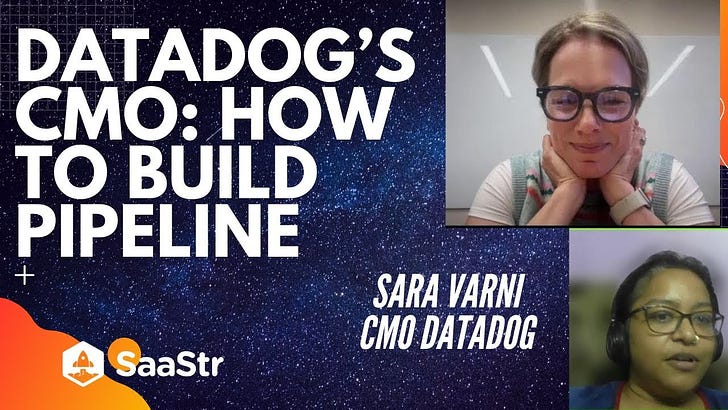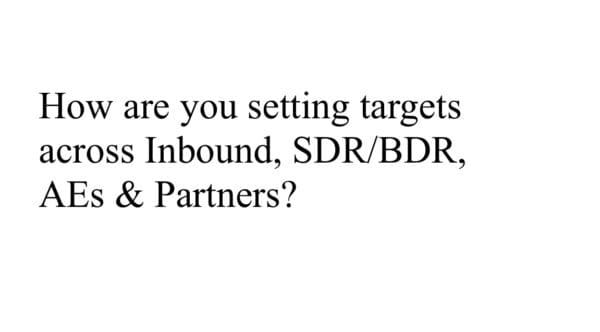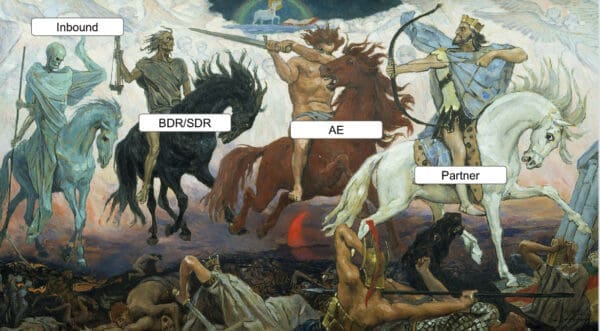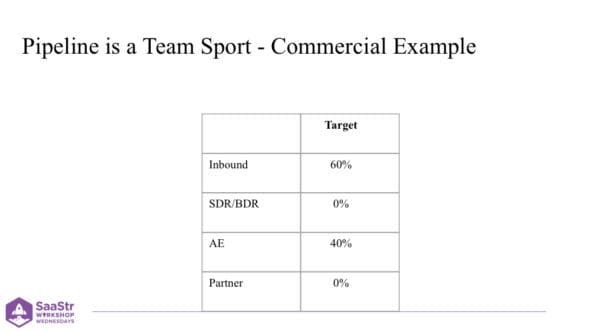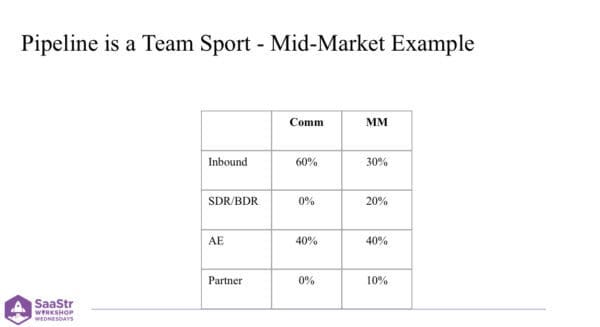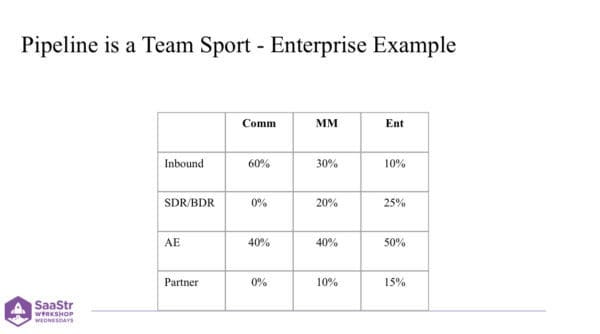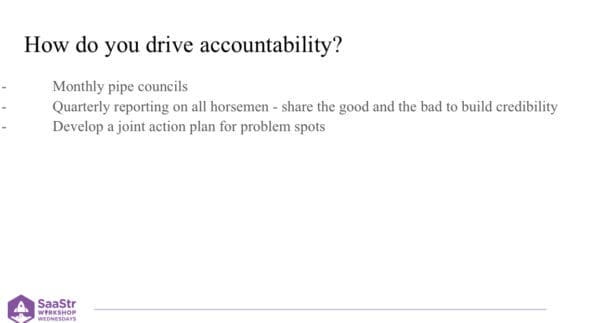How to Build Pipeline and GTM Alignment in 2025 with Datadog’s CMO Sara Varni
"You want marketing to take ownership over pipeline, even if they don’t get credit. This is more of a shareholder view and is best for the whole company."
In the latest edition of SaaStr’s Workshop Wednesday, Sara Varni, Datadog‘s CMO, shares how to build pipeline and create alignment across sales and marketing. The CMO role at Datadog covers the usual aspects of marketing, including product marketing, corporate communications, events, partnership marketing, and solutions marketing.
While these insights seem like pipeline 101, they aren’t always implemented. Let’s look at some quick facts about Sara’s experience. She spent a decade at Salesforce before moving on to Twilio as CMO when they were at about $400M ARR with 30 sales reps. They had a healthy self-service motion, but growth was flattening.
About four years later, she joined Attentive as CMO, a late-stage startup in the SMS marketing space. Now, she’s the CMO at Datadog. Each of these companies had different GTM motions.
It’s Planning Season
For many companies, it’s planning season. Planning season can be tricky, and there’s sometimes healthy debate on where growth will come from as everyone is pushing to reach a specific growth number year over year.
Studying joint targets between sales and marketing isn’t always the norm, but having a holistic pipeline view is crucial. If you only focus on marketing and their goals within the marketing swim lane, they might not look at or care about other drivers of success for the business.
When you have a holistic pipeline model, marketing, sales, channel teams, and inside sales are all looking at targets that drive better results for everyone.
How Are You Setting Targets Across Inbound, SDR/BDR, AEs, and Partners?
If you’re a C-level or general executive, how are you thinking about your targets so everyone feels joint responsibility for driving pipeline across each of these sources? Secondarily, are you set up for joint success, or are you only focused on your one department?
The Four Horsemen Model
When Sara joined Salesforce, they had the four-horsemen model. It was a clever way to see how inbound, SDR/BDR, AEs, and partners fed the overall numbers. Obviously, this can differ significantly by segment and the GTM motion for each segment.
Let’s look at some high-level examples of these different pipeline models.
#1: A Commercial Example.
Marketing probably has a one-to-many approach, with more low-touch programs and a lot of digital and online components. You’re not sending people out to steak dinners, customers are closing smaller deals, and you’re unlikely to have a BDR team supporting an AE team to prospect. In this example, imagine 60% of pipeline is from inbound and AEs generate 40%.
#2: A Mid-Market Example
Those percentages shift a little. It sounds obvious that the low end of the mid-market operates like a small business account, while the high end looks like the Enterprise. It’s tricky to straddle this one, but inbound drives roughly 30% of the pipeline. You see that the SDR function contributes closer to 20%. AEs stay steady at around 40%, and partners begin to influence the pipeline as deals get more sophisticated.
#3: An Enterprise Example
The inbound number comes way down in terms of the sourced pipeline, and the SDR steps up. AE and partners step up slightly. This is how it might look across the company serving all segments and what to expect from each source.
Why It Matters
It’s important to look at all these sources together because if you look in isolation, you might not see where things are going wrong or right. For example, if you’re looking at the quarter and see sales and marketing moving in lock-step at 80% of their target, it might be a sign of a macro challenge or a competitor hitting you hard.
Even more interesting is if these numbers are going in different directions. Marketing isn’t hitting targets, and sales is crushing it. If this is happening out of the blue, inspect if the rules of engagement have changed. Is sales qualifying leads differently? Did marketing invest or divest in specific programs that could be driving that drop?
There’s a huge benefit when marketing and sales have skin in the game. You never want marketers taking a victory lap if they hit their targets, but sales didn’t. You want marketing to take ownership over pipeline, even if they don’t get credit. This is more of a shareholder view and is best for the whole company.
How Do You Drive Accountability?
It’s great to set these kinds of targets, but you have to consistently keep them front and center to drive accountability and results. Datadog does this with monthly meetings, where everyone reports on the news and also identifies pockets of opportunity to rectify issues and double down on what’s working.
Quarterly reporting on the horsemen and transparency are other great ways to drive accountability. They create a safe place to communicate when things are in the red or yellow, leading to problem-solving and a proactive culture.
You want to develop a joint action plan rather than saying, “Hey, marketing, go fix this.” Instead, figure out how to work together to drive success for every function.
Key Takeaways:
Studying targets between sales and marketing isn’t always the norm, but having a holistic pipeline view is crucial.
Think about how you’re setting your targets so there is joint responsibility for driving pipeline.
The four-horsemen model is a clever way to see how inbound, SDR/BDR, AEs, and partners feed the overall numbers. Quarterly reporting on the horsemen and transparency are other great ways to drive accountability.

